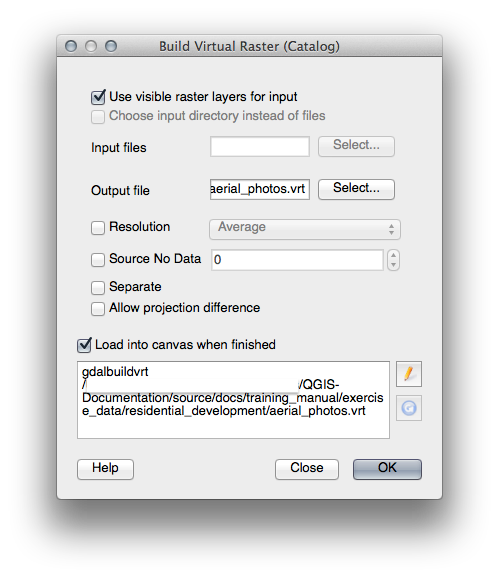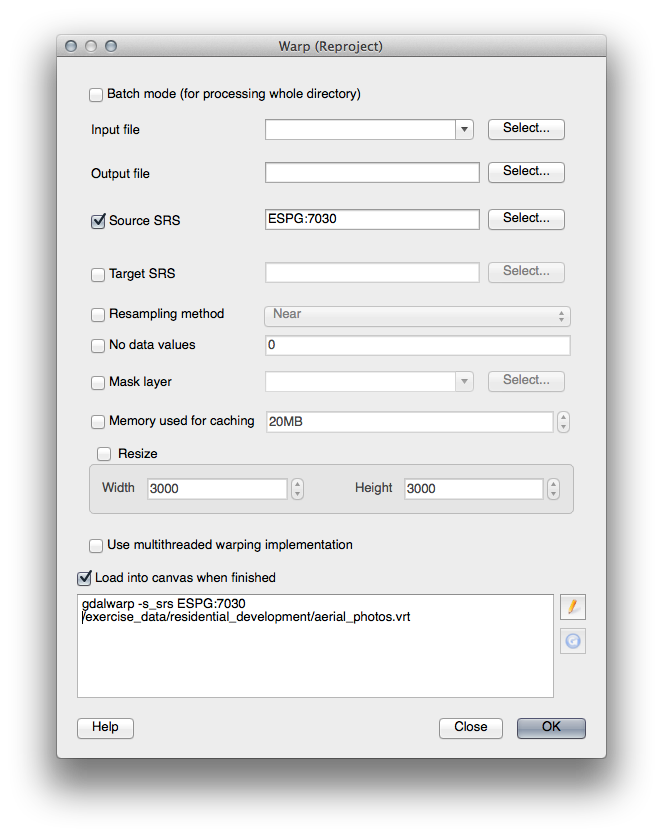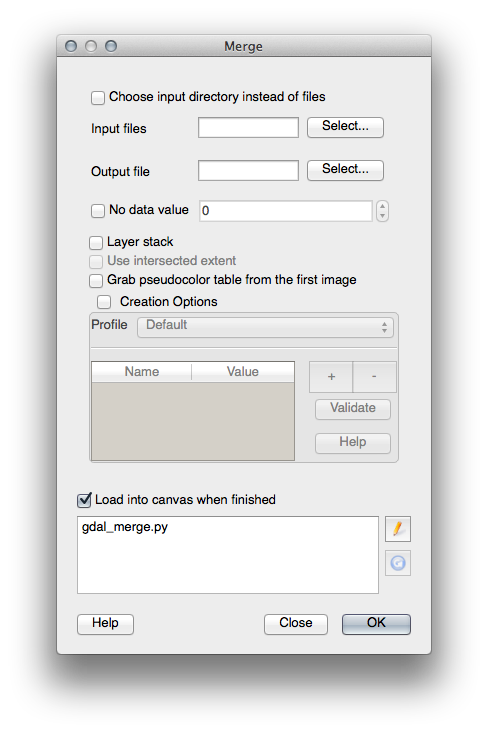8.1. Lesson: 래스터 데이터 작업¶
래스터 데이터는 벡터 데이터와 많이 다릅니다. 벡터 데이터는 꼭짓점들로 구성된, 그리고 라인 및/또는 면과 연결되어 있을 수도 있는 개별 피처들로 이루어져 있습니다. 그러나 래스터 데이터는 일반 이미지와 같습니다. 실재 세계에 있는 오브젝트의 다양한 속성을 표현할 수도 있지만, 이 오브젝트들은 개별 오브젝트로 존재하는 것이 아니라 다양한 서로 다른 색상값을 가지는 픽셀을 이용하여 표현됩니다.
이 모듈에서 여러분은 기존 GIS 분석을 보충하는 데 래스터 데이터를 사용하게 될 것입니다.
이 강의의 목표: QGIS 환경에서 어떻게 래스터 데이터를 작업하는지 배우기.
8.1.1.  Follow Along: 래스터 데이터 불러오기¶
Follow Along: 래스터 데이터 불러오기¶
Open your analysis.qgs map (which you should have created and saved during the previous module).
Deactivate all the layers except the solution and important_roads layers.
Click on the Load Raster Layer button:
The Load Raster Layer dialog will open. The data for this project is in exercise_data/raster.
- Either load them all in separately, or hold down ctrl and click on all four of them in turn, then open them at the same time.
The first thing you’ll notice is that nothing seems to be happening in your map. Are the rasters not loading? Well, there they are in the Layers list, so obviously they did load. The problem is that they’re not in the same projection. Luckily, we’ve already seen what to do in this situation.
- Select Project ‣ Project Properties in the menu:
- Select CRS tab in the menu:
- Enable “on the fly” reprojection.
- Set it to the same projection as the rest of your data (WGS 84 / UTM zone 33S).
- Click [OK].
The rasters should fit nicely:

연구 지역 전체를 커버하는 항공사진 4장을 불러왔습니다.
8.1.2.  Follow Along: 가상 래스터 생성¶
Follow Along: 가상 래스터 생성¶
이제 이 화면에서 볼 수 있듯이, 사용자의 벡터 레이어가 사진 네 장 전체에 걸쳐 있습니다. 즉 항상 이 래스터 4개를 동시에 작업해야 한다는 뜻입니다. 그건 좀 불편하겠죠. 한 장의 (합성) 이미지 파일로 작업하는 편이 훨씬 낫지 않을까요?
Luckily, QGIS allows you to do exactly this, and without needing to actually create a new raster file, which could take up a lot of space. Instead, you can create a Virtual Raster. This is also often called a Catalog, which explains its function. It’s not really a new raster. Rather, it’s a way to organize your existing rasters into one catalog: one file for easy access.
To make a catalog:
- Click on the menu item Raster ‣ Miscellaneous ‣ Build Virtual Raster (Catalog).
- In the dialog that appears, check the box next to Use visible raster layers for input.
- Enter exercise_data/residential_development as the output location.
- Enter aerial_photos.vrt as the file name.
- Check the Load into canvas when finished button.
Notice the text field below. What this dialog is actually doing is that it’s writing that text for you. It’s a long command that QGIS is going to run.
주석
 Keep in mind that the command text is editable, so you can
customize the command further if preferred. Search online for the initial
command (in this case, gdalbuildvrt) for help on the syntax.
Keep in mind that the command text is editable, so you can
customize the command further if preferred. Search online for the initial
command (in this case, gdalbuildvrt) for help on the syntax.
- Click OK to run the command.

It may take a while to complete. When it’s done, it will tell you so with a message box.
- Click OK to chase the message away.
- Click Close on the Build Virtual Raster (Catalog) dialog. (Don’t click OK again, otherwise it’s going to start running that command again.)
- You can now remove the original four rasters from the Layers list.
- If necessary, click and drag the new aerial_photos raster catalog layer to the bottom of the Layers list so that the other activated layers become visible.
8.1.3.  래스터 데이터 변환¶
래스터 데이터 변환¶
앞에서 설명한 방법으로 카탈로그를 이용해서 데이터셋을 가상으로 합치고 “실시간”으로 재투영할 수 있습니다. 그러나 비교적 긴 시간 동안 사용할 데이터를 준비하는 경우, 이미 합쳐지고 재투영된 새 래스터를 생성하는 편이 더 효율적일 수도 있습니다. 초기 준비 과정에 시간이 걸릴 수도 있지만, 맵 상에서 래스터를 사용할 때 속도를 향상시킬 수 있습니다.
8.1.3.1. 래스터 재투영¶
- Click on the menu item Raster ‣ Projections ‣ Warp (Reproject).
Note that this tool features a handy batch option for reprojecting the contents of whole directories. You can also reproject virtual rasters (catalogs), as well as enabling a multithreaded processing mode.

8.1.3.2. 래스터 합치기¶
- Click on the menu item Raster ‣ Miscellaneous ‣ Merge.
You can choose to process entire directories instead of single files, giving you a very useful built-in batch processing capability. You can specify a virtual raster as input file, too, and all of the rasters that it consists of will be processed.
You can also add your own command line options using the Creation Options checkbox and list. This only applies if you have knowledge of the GDAL library’s operation.

8.1.4. In Conclusion¶
QGIS를 통해 사용자의 기존 프로젝트에 래스터 데이터를 손쉽게 포함시킬 수 있습니다.
8.1.5. What’s Next?¶
다음 강의에서 항공사진이 아닌 래스터 데이터를 사용해서 래스터를 어떻게 심볼로도 활용할 수 있는지 배워보겠습니다.
